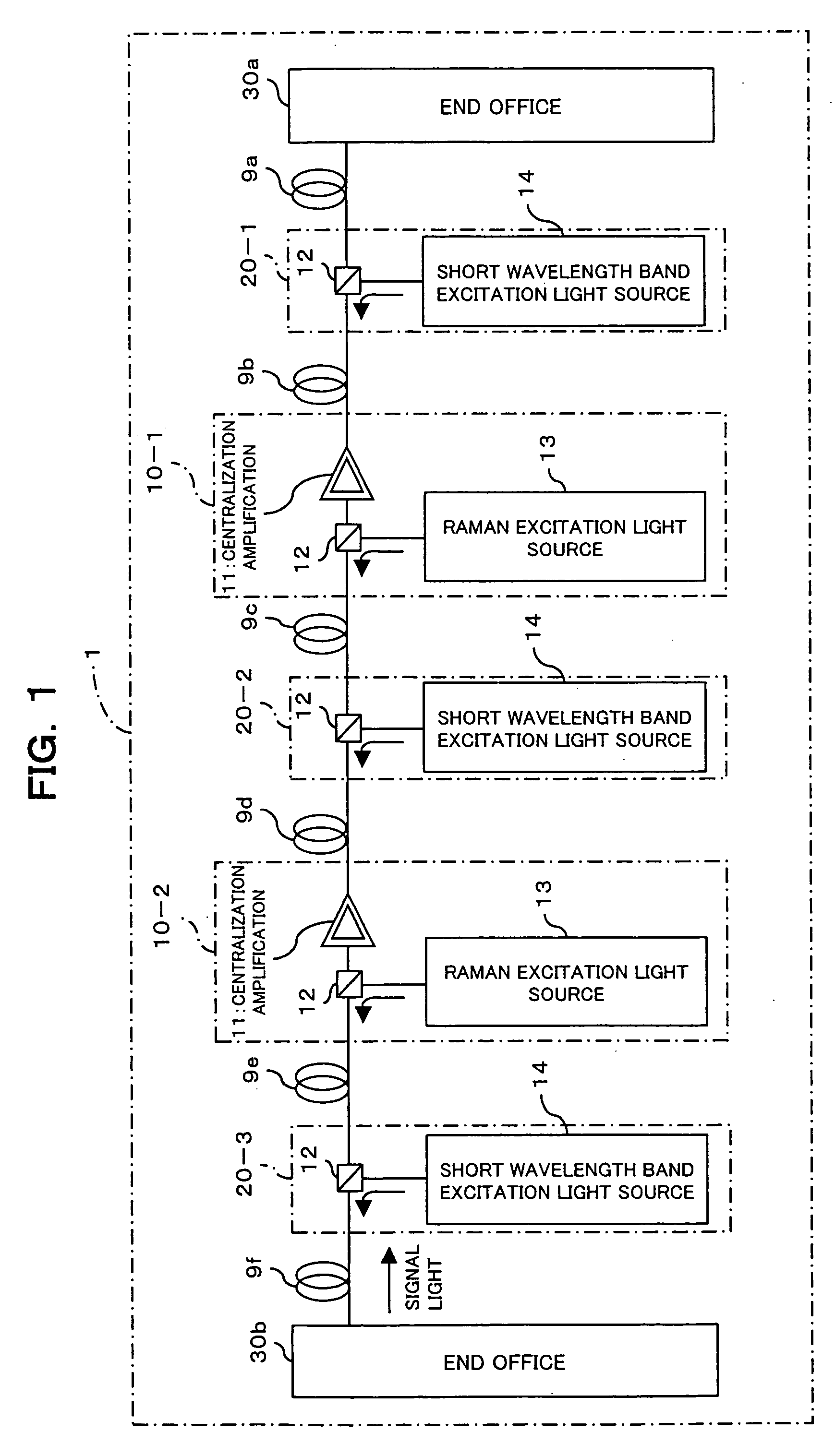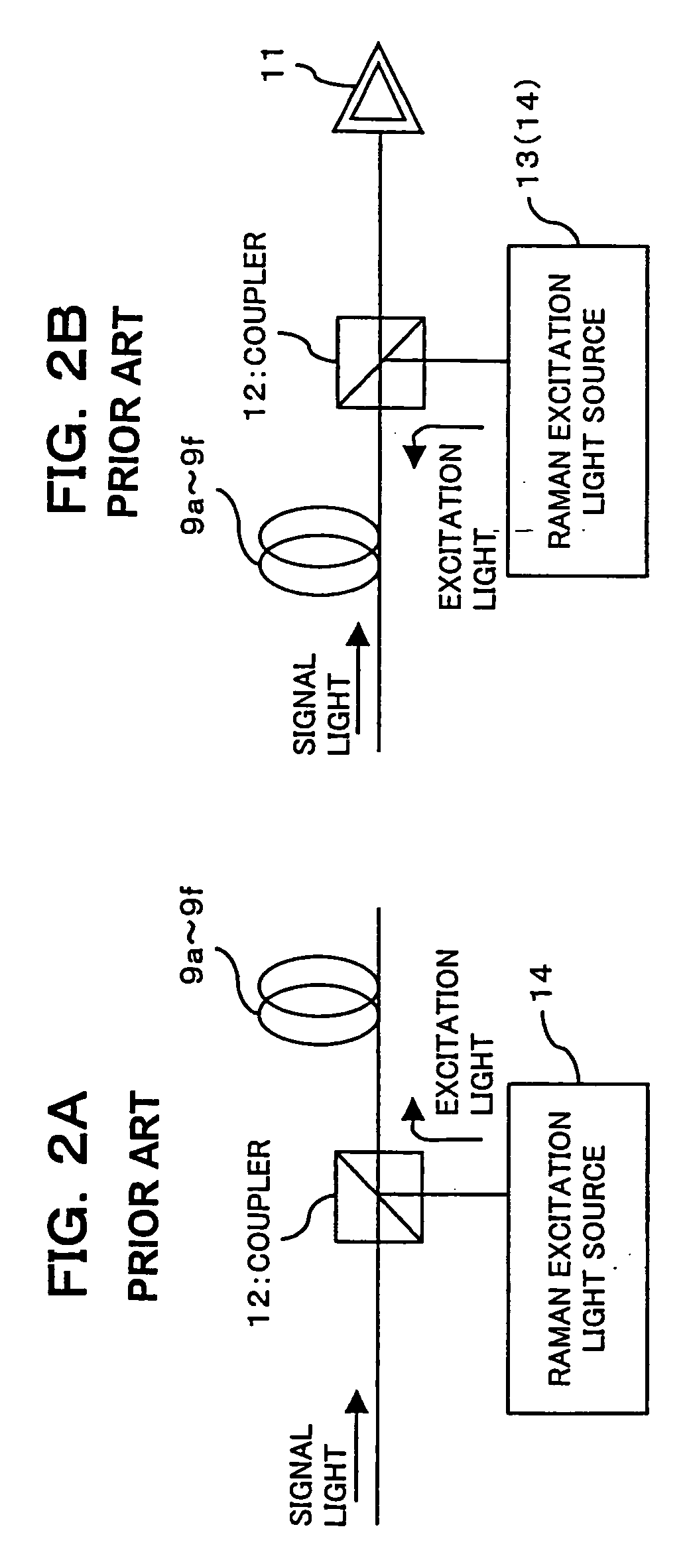Optical transmission system, optical repeater, and optical transmission method
a transmission system and optical repeater technology, applied in electromagnetic repeaters, multiplex communication, instruments, etc., can solve the problems of reducing the sn ratio of the entire transmission system, and affecting the transmission quality
- Summary
- Abstract
- Description
- Claims
- Application Information
AI Technical Summary
Benefits of technology
Problems solved by technology
Method used
Image
Examples
first embodiment
[0058]FIG. 3 shows the wavelength region of a signal light that is transmitted by an optical repeater system 1 constructed according to the present invention. With the wavelength region divided into an S+ band, an S band, a C band, and an L band from the short wavelength side, the production of the optical repeater system 1 is being examined.
[0059] Generally, the S+ band ranges from 1451.40 nm to 1482.65 nm, the S band ranges from 1489.70 nm to 1522.56 nm, the C band ranges from 1529.55 nm to 1563.86 nm, and the L band ranges from 1567.95 nm to 1604.02 nm.
[0060] At present, commercially-available optical repeater systems are employing two kinds of bands, the C band and the L band. Recently, the use of the S band is being examined. Considering a further increase in transmission capacity, there is a possibility that the S+ band on a shorter wavelength side than the wavelengths of the S band be employed to enlarge transmission capacity. In this case, a signal light in the S+ or S band...
second embodiment
[0112]FIG. 8 shows an optical repeater system constructed according to the present invention. The optical repeater system 1a shown in the figure is constructed of optical repeaters 10a-1 and 10a-2 and optical auxiliary repeaters 20a-1, 20a-2, and 20a-3. Note in FIG. 8 that the parts with the same reference numerals as those of FIG. 1 have the same or similar function.
[0113] The optical auxiliary repeaters 20a-1, 20a-2 are equipped with short-wavelength band excitation light sources 14-1 and 14-2 for amplifying a short wavelength band component, and couplers 12-1, 12-2. A signal light and excitation light are wavelength-multiplexed at the couplers 12-1 and 12-2, whereby forward excitation and backward excitation are both performed on the signal light.
[0114] This can further reduce loss due to Stimulated Raman Scattering and loss in the short wavelength band light having a great loss due to optical fibers, and therefore can reduce the output of the excitation light that is emitted fr...
PUM
| Property | Measurement | Unit |
|---|---|---|
| wavelength | aaaaa | aaaaa |
| zero-dispersion wavelength | aaaaa | aaaaa |
| zero-dispersion wavelength | aaaaa | aaaaa |
Abstract
Description
Claims
Application Information
 Login to View More
Login to View More - R&D
- Intellectual Property
- Life Sciences
- Materials
- Tech Scout
- Unparalleled Data Quality
- Higher Quality Content
- 60% Fewer Hallucinations
Browse by: Latest US Patents, China's latest patents, Technical Efficacy Thesaurus, Application Domain, Technology Topic, Popular Technical Reports.
© 2025 PatSnap. All rights reserved.Legal|Privacy policy|Modern Slavery Act Transparency Statement|Sitemap|About US| Contact US: help@patsnap.com



